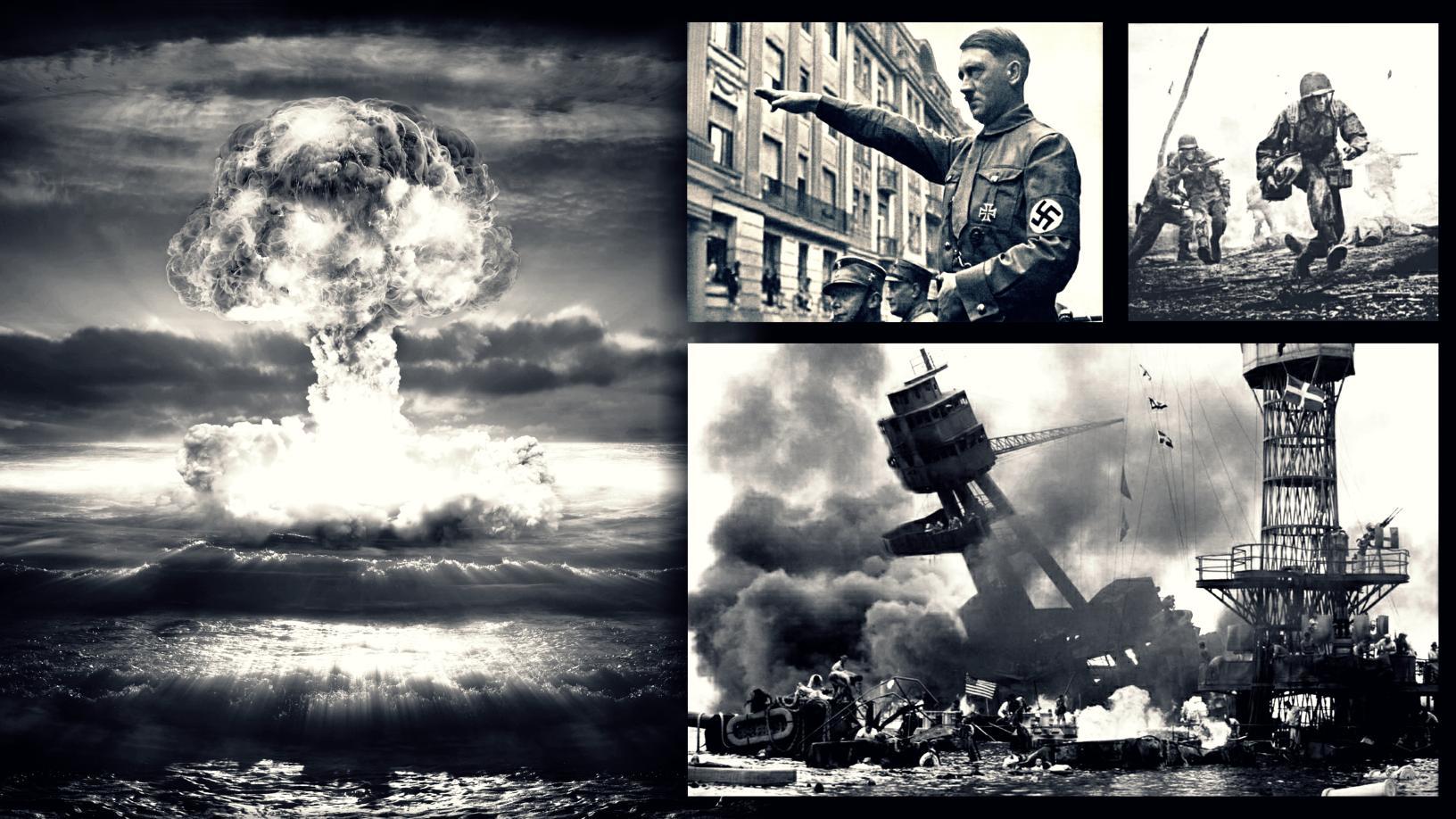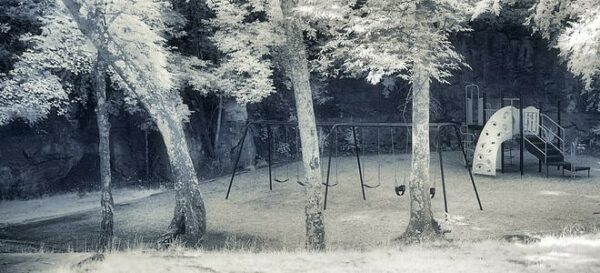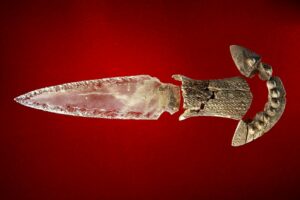Here, in this article, is a collection of some truly weird and unknown facts from the period of two major international conflicts that occurred during the 20th century: World War I that lasted four years, from 1914 to 1918, and World War II that lasted six years, from 1939 to 1945.

1 | Japanese Soldier Who Took Three Decades To Surrender After World War II
Hiroo Onoda, an Imperial Japanese Army intelligence officer who fought in World War II, never surrendered until 1974 because he didn’t know it all had already ended in 1945. He fought for almost 30 years and held his position in the jungle of one of the Philippines islands. His former commander travelled from Japan to personally issue orders relieving him from duty in 1974.
2 | A 4-Year-Old Boy Was Saved And Rest Is History
In 1894, a priest saved a 4-year-old boy from drowning ― The boy was named Adolf Hitler. Hitler had been in many more deadly situations.
3 | The 9th Man Escaped
In World War II, nine US airmen escaped from their planes after being shot down during bombing raids against Japan. Eight of them were captured, tortured, beheaded, cooked and eaten by Japanese officers. It was one of the grisliest war crimes of the whole conflict. However, the 9th man escaped, he was George H.W. Bush, the future President of the United States.
4 | A City Bluffed Its Way To Safety
One German city came up with a novel and ingenious way of dodging Allied bombing raids during the war. Konstanz, close to the Swiss border, decided to keep all its lights on as normal at nighttime, rather than enforcing the usual blackout. The bluff paid off, as Allied pilots assumed it actually was in Switzerland, and spared it from harm.
5 | A Ship Was Sunk In The Both World Wars!
One ship had a particularly unlucky time in the war. Originally called the SS Wien, it served in the Australian Navy during World War I, and was sunk in 1918. A few years later it was raised from the watery depths and put back into service, this time by Italy, and come World War II it served as a hospital ship for Mussolini’s forces. At which point it was attacked by the Allies, and became the only ship to have been sunk in both world wars.
6 | The Nazis Wanted To Create A Space Weapon
German scientists were genuinely interested in building a ‘sun gun’ or ‘heliobeam’, which would consist of a vast magnifying glass in space. Based on the ideas of German physicist Hermann Oberth, the glass was intended to concentrate beams of sunlight to scorch cities and boil the seas. It wouldn’t have been much use against the Allies, though, as the Nazis calculated it would take up to a century to make.
7 | A Fake Paris Was Built To Fool German Bombers
In World War I, French authorities decided to build a replica Paris outside the city itself to fool German bombers into dropping their destructive loads where only decoys could be harmed. But, despite such details, the replica Paris was not quite finished before the last German air raid in Paris, in September 1918, meaning it was never tested. The fake Paris was rapidly deconstructed after the war.
8 | Casualties In The Battle Of The Somme
The most terrific death toll in British army history occurred during the Battle of the Somme ― 60,000 casualties in a single day. It took place between 1 July and 18 November 1916 on both sides of the upper reaches of the River Somme in France.
9 | Quentin Roosevelt I – A Full Military Burial With Honors
Teddy Roosevelt’s youngest son, Quentin Roosevelt I fought in World War l as a pilot. On July 14, 1918, he was killed in a dogfight and his plane crashed behind enemy lines. The Germans gave him a full military burial with honors. Reportedly, they admired that a president’s son chose to fight.
10 | Japan Was Working On A “Death Ray”
Japan paid 1 million yen to a team of scientists that promised they could create a “death ray” that would use wave electric power to kill humans standing miles away, drawing on the innovations of Nikola Tesla. The Japanese got as far as a prototype that could kill from as far away half a mile — but the target had to stand still for 10 minutes for it to work.
11 | The Canadian War Hero Goat Sergeant Bill
There was a goat called Sergeant Bill, who became a Canadian war hero during World War I when he head-butted three soldiers into a trench to avoid an exploding shell.
12 | The Horrors Of Big Bertha
Big Bertha, a gun used during World War I, was so powerful that troops had to move 300 yards away and put cotton wads in their ears, eyes, and nose, as well as open their mouths, so that their eardrums weren’t burst by the blast pressure.
13 | One Battle Lasted The Entire War
The Battle of the Atlantic ran as long as World War II itself, from the moment the British declared war against Germany, in September 1939, through the German surrender in May 1945 — almost six years. The whole time, German U-boats aimed to disrupt the supplies of goods going to Britain battled the Royal Navy, Royal Canadian Navy, and United States Navy, as well as Allied merchant ships. The Germans were devastatingly effective at times, practically starving the British during some periods of the battle — until eventually, the tide turned.
14 | The Great Celebration
During World War I, on Christmas of 1914, the British and germans lay down their weapons, crossed no man’s land, and joined each other to celebrate. They exchanged food, played games, sang songs, and even attended burials for each side. This was seen as a symbolic moment during the conflict.
15 | Bulgaria Won The Battle
In the Battle of Doiran (1918), Allies (UK, Greece and France) shelled Bulgarian positions with over 500,000 explosive and gas shells and, despite their huge advantage in firepower and manpower, they lost the battle. The British paid great honour to the Bulgarian Commander General Vladimir Vazov when in 1936 he arrived in Victoria Station in London, by lowering the flags of all their regiments who participated in the battle.
16 | Two-Thirds Of Soviet Men Born In 1923 Didn’t Survive The War
Though some accounts claim 80 percent of Soviet men born in 1923 died during the war, Mark Harrison, professor at the Department of Economics at the University of Warwick, crunched the numbers and came up with a lower, but still staggering, figure: “Around two thirds (more exactly, 68 percent) of the original 1923 male birth cohort did not survive World War II,” he wrote on his blog.
17 | The Isolated Russian Family
A Russian family, who were cut off from all human contact for 40 years in the Siberian wilderness, were completely unaware that World War II had occurred.
18 | Hitler Executed 84 Of His Own Generals
Yes, Hitler was also ruthless and cruel in his treatment of his own military leaders, executing no fewer than 84 of his own generals over the duration of the war. Most of the executions were due to the discovery that the men were plotting against him — in particular those found to be part of the now legendary 20 July bomb plot.
19 | The Noteworthy Word
During World War I, the word “f*ck” was used too often, it was considered noteworthy when someone didn’t use it. For example, “Get your f*cking rifles,” was considered routine, whereas “Get your rifles,” implied urgency and danger.
20 | One Man Was Believed To Fight On Every Side Of The War
Many Koreans were forced to fight on behalf of the Japanese cause — but there is one soldier who is reputed to have fought for basically everyone. According to legend, Korean soldier Yang Kyoungjong, who had fought for the Imperial Japanese Army, was then captured and forced to fight for the Soviet Red Army, and later the German Wehrmacht. It was during this time that the Allied forces landed in France and Yang was captured by the U.S. Army.
21 | Olympic Rammed An Enemy Warship
Ocean liner Olympic, sister ship of Titanic, was the only merchant ship in the war to sink an enemy warship. She rammed a German U-boat.
22 | Hitler Refused To Use Biological Weapons in Battle
Though Nazi scientists worked to develop weaponized versions of diseases such as typhoid and cholera, Hitler discouraged the use of offensive biological weapons in battle, possibly because of his experiences with bioweapons during the First World War.
23 | Krummlauf – A Weird German Weapon
The “Krummlauf” ― a weird German weapon from WWII. The bent barrel attachment included a periscope sighting device for shooting around corners from a safe position. It was produced in several variants: with 30°, 45°, 60° and 90° bends respectively.
24 | The Strange Case Of Owen John
In World War II, an American pilot named Owen John Baggett gained fame for shooting down a Japanese plane using his pistol while parachuting.
25 | Wind Doe’s Matter
In 1914, the British made their first gas attack by releasing 140 tons of chlorine gas and hoping the wind would blow it into German trenches. However, a sudden shift wind direction blew it into their own trenches injuring almost 2000 British soldiers.
26 | Pure Aryan Children
During the Nazi Period in Germany, there was a programme called Lebensborn, where ‘racially pure’ women slept with Nazi SS Officers in the hopes of producing pure Aryan children. An estimated 20,000 children were born during the 12 years of period.
27 | A Taste Of Your Own Medicine
In World War II, the Russians trained and deployed about 40,000 anti-tank dogs. The dogs were loaded up with explosives and trained to run under German tanks where they would be detonated. Many dogs got scared, returned to their own trenches, and killed their Russian trainers, while others ended up running under the Russian tanks and blowing them up instead, because the tanks the dogs were trained to run under were Russian.
28 | Hitler’s Nephew, William Fought Against Germany
Adolf Hitler’s nephew, William Patrick Stuart-Houston fought for the US against his uncle in World War II. He served in the United States Navy and eventually received American citizenship.
29 | “Genocide”
During World War I, the Ottoman Empire was responsible for over 1 million Armenians living in their empire. This event was the basis for the creation of the word “Genocide”. The Armenian Genocide is the second most-studied case of genocide after the Holocaust.
30 | The Password Containing The Letter ‘L’
American soldiers in the Pacific theatre of World War II always used passwords containing the letter ‘L’ due to Japanese mispronunciation, a word such as ‘lollapalooza’ would be used and upon hearing the first two syllables come back as ‘rorra’ would “open fire without waiting to hear the rest.”
31 | The Spying Tree
In World War I, German, French, and British forces used fake, hollow trees to spy on their enemies’ movement. To do this, combat artists would duplicate a bombed-out tree nearby. and under the cover of darkness, engineers would uproot the original tree and replace it with the fake one.
32 | Where There’s A Will There’s A Way
During World War I, allied soldiers would fire thousands of rounds at random over the German trenches to boil the coolant water in their machine guns to make tea.
33 | They Fell In Love With Canada
During World War II, prisoners of war in Canada were treated so nicely that they didn’t want to leave Canada when released.
34 | The Hero Dog Of WWI
Sergeant Stubby, the ‘Hero Dog of WWI’, once caught a German soldier by the seat of his pants and held him until American soldiers came. He also served in 17 battles, saved his regiment from surprise mustard gas attacks, and helped locate wounded soldiers.
35 | Indian Soldiers Fought, Died And Were Forgotten
More Indians died in World War II war efforts than the Britons, Americans and French combined.
36 | The Dutch Ship That Camouflaged As Island
During World War II, the Dutch minesweeper, HNLMS Abraham Crijnssen, evaded the Japanese for eight days disguised as an island. The crew covered the decks in cut trees and painted exposed surfaces to look like rocks. They moved only at night and anchored close to shore by day, eventually escaping to Australia.
37 | Wojtek – The WWII Fighter Bear
Wojtek, a Syrian brown bear who fought in World War II after being discovered by prisoners in Iran. He was drafted into the Polish Army and carried ammunition shells to the front lines. He was even taught to salute.
38 | The Unlucky Third Person
It is considered unlucky to be the third person to light a cigarette. During the Crimean War to World War II, soldiers thought that the enemy would see the first light, take aim on the second, and fire on the third, killing the soldier.
39 | When Society Can’t Differentiate Between Punishment, Revenge And Pleasure
After World War II, women in France who had relations with German soldiers were shaved bald so that everyone could see that they had betrayed their country.
40 | They Killed The Venomous Animals
During the outbreak of World War II, the London Zoo killed all their venomous animals in case the zoo was bombed, and the animals escaped.
41 | Gunner – The Great Dog
During World War II in Australia, there was a dog whose hearing was so acute that it could warn airforce personnel of incoming Japanese planes 20 minutes before they arrived, and before they showed up on radar. “Gunner” could also differentiate the sounds of allied and enemy aircraft.
42 | Hitler’s Moustache
Hitler used to have a normal-sized moustache, but he was ordered to trim it down in order to better accommodate a gas mask.
43 | U.S. Schools Burned Thousands Of German Books
During World War I, U.S. schools stopped teaching German ― the then second most widely spoken language nationwide ― and German books were burned in some communities.
44 | Royalty Comes After Country
Queen Elizabeth II served as a mechanic and military truck driver in World War II. The queen remains the only female member of the royal family to have entered the armed forces and is the only living head of state who served in World War II.
Bonus:
Hitler Refused To Use Chemical Weapons In The War
Führer of Nazi Germany from 1934 to 1945, Adolf Hitler is undoubtedly one of the most influential figures of the 20th century. The dictator was also responsible for the Holocaust that led to the death of around six million European Jews. However, he refused to use sarin (liquid used as a chemical weapon) during World War II.
Some historians link Hitler’s unwillingness to use chemical weapons with his own experience as a soldier in the First World War. In his book, Mein Kampf, he described this incident:
“Towards morning, I also began to feel pain. It increased with every quarter of an hour, and about seven o’clock my eyes were scorching.… A few hours later my eyes were like glowing coals, and all was darkness around me,” Hitler wrote.
The Data Of Nazi’s Unethical Experiments
The Nazi experiments during World War II were among the most egregious instances of unethical human experiments performed on Jews and gypsies in the concentration camps. But from the Apollo rockets to new drugs to treat HIV, almost all the scientific advances are obtained in dubious ways, using the results from Nazis’ unethical experiments, and scientists are still struggling with ethical questions over use of the Nazis’ data.




